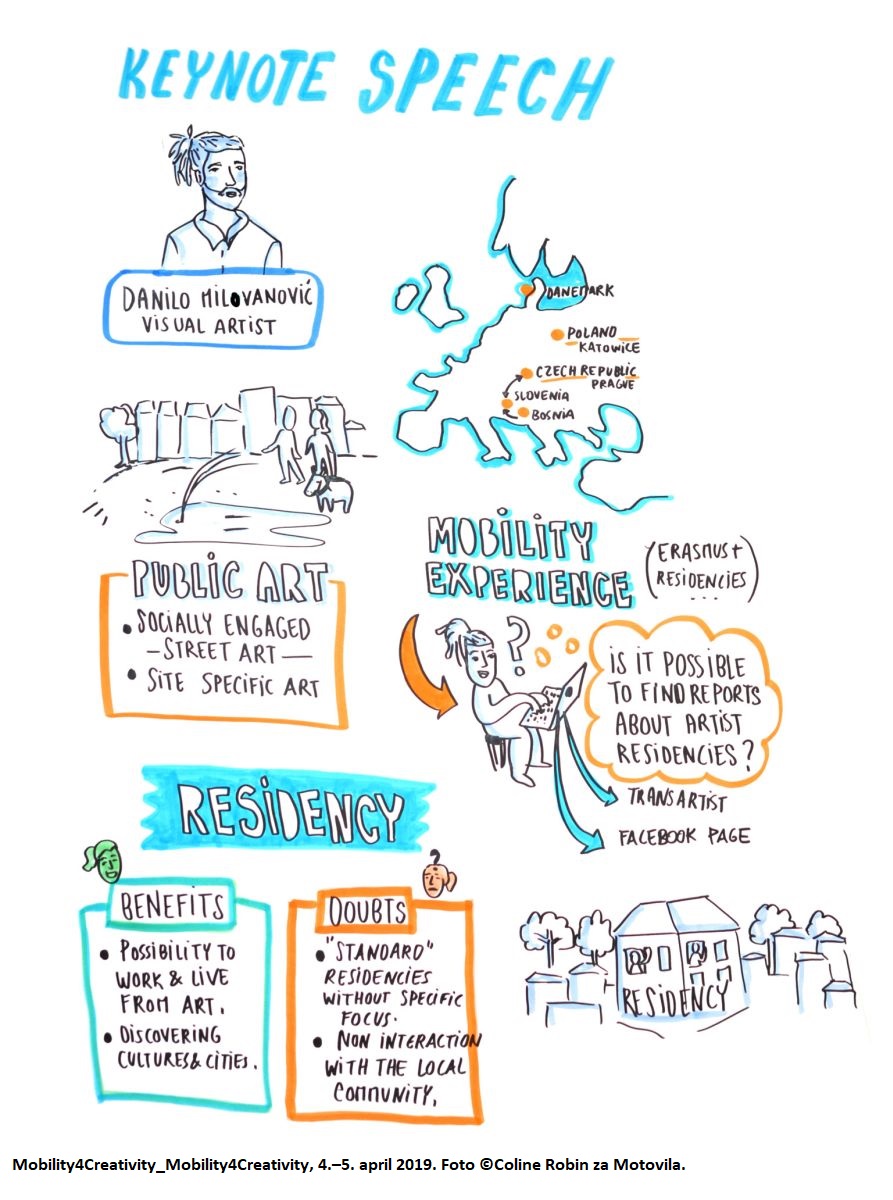Novice
Artist mobility is not art tourism
Visual artist Danilo Milovanović delivered his speech from a perspective of an artist experienced in crossing borders. The conference titled “Mobility for Creativity” organised by Motovila in Ljubljana on 4–5 April 2019, explored the benefits and challenges of international mobility in the cultural and creative sector (CCS), especially putting mobility’s environmental impact to the test.

Artist Danilo Milovanović has a master’s in art in the public space. He sees mobility as part of the daily life of an artist. After moving to Slovenia from Bosnia to study at UL ALUO, he attended an Erasmus+ exchange to study at UMPRUM in Prague, giving him his first experience of connecting with artists from around the world. This experience fostered his interest in short and long-term exchanges. That led him to a one-week experience in Copenhagen in which 21 artists were invited to create a 1-day exhibition. Next followed the Katowice City of Gardens, an experience in which the text description and the actual situation differed greatly. Upon arrival, he saw that the organisers were not so interested in following the artists’ interests. The expectations on both sides were unclear. As there was no room for experiment, he followed his own practice, functioning independently.
Through these experiences, he realised that there’s no public platform where artists can write about their residency experiences and give feedback about AiR programmes. There’s the website Trans Artists, which boasts 1520 residencies in its database, ca. 800 in Europe, but it serves a different function.
Danilo believes that many AiR programmes or mobility opportunities are created in a copy/paste way. Then they are aggressively promoted. Many, however, are more like art tourism than a real opportunity for artists.
He recommends that organisation keep in mind that most artists must combine their artistic and existential practices even if they are on a residency. Many artists don’t work in just one physical space and are used to changing their environment, making going from residency to residency their practice. If artists are not involved in the local scene or issues, then they end up producing similar works just in different conditions than at home, so introducing them to the local environment is key.
A strong programme, with high-level organisation and a view on social action can have a great influence on the artistic practice of individuals. Mila Panić has established a website called Fully Funded Residencies that lists residencies which have an impact on regional areas and the positive benefits, including artists reflections. Danilo says he’s surprised that there is no academic research comparing different programmes. Based on objective texts, he thinks we could make better models. In any case, artist residencies should avoid art tourism. Art practice must be the priority, if it is only low-level priority, then it is pointless.
Back to FULL REPORT by Jana Renée Wilcoxen for Motovila, Ljubljana 2019.
CC Attribution-NonCommercial 4.0 International (CC BY-NC 4.0).
Further information about the #Mobility4Creativity conference.
The event was organized by the Motovila Institute in cooperation with Arts and Theatre Institute / CED CZ, DutchCulture / CED NL, Centro de Informacão Europa Criativa / CED PT, CED Ireland – MEDIA Office Dublin, Ministry of Culture of the Republic of Croatia / CED HR, Federal Chancellery of Austria, Arts and Culture / CED AT, SCCA–Ljubljana and CMEPIUS.


